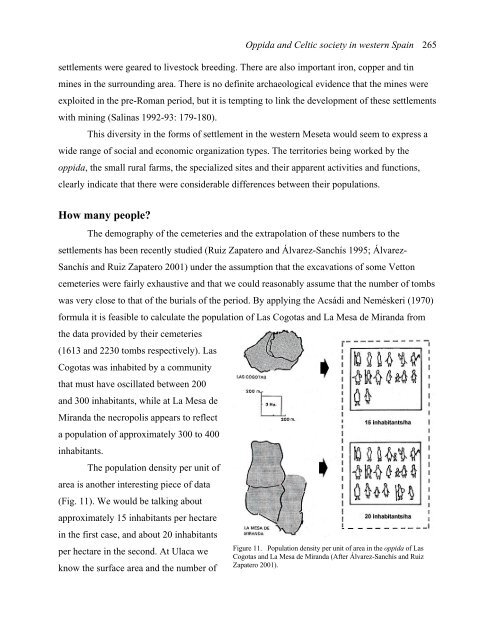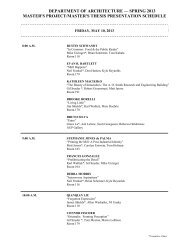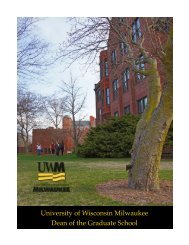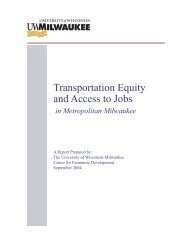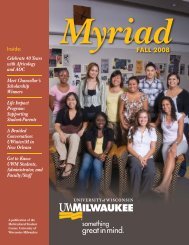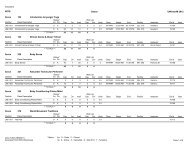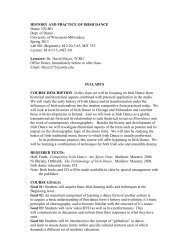Oppida and Celtic society in western Spain
Oppida and Celtic society in western Spain
Oppida and Celtic society in western Spain
You also want an ePaper? Increase the reach of your titles
YUMPU automatically turns print PDFs into web optimized ePapers that Google loves.
<strong>Oppida</strong> <strong>and</strong> <strong>Celtic</strong> <strong>society</strong> <strong>in</strong> <strong>western</strong> Spa<strong>in</strong> 265<br />
settlements were geared to livestock breed<strong>in</strong>g. There are also important iron, copper <strong>and</strong> t<strong>in</strong><br />
m<strong>in</strong>es <strong>in</strong> the surround<strong>in</strong>g area. There is no def<strong>in</strong>ite archaeological evidence that the m<strong>in</strong>es were<br />
exploited <strong>in</strong> the pre-Roman period, but it is tempt<strong>in</strong>g to l<strong>in</strong>k the development of these settlements<br />
with m<strong>in</strong><strong>in</strong>g (Sal<strong>in</strong>as 1992-93: 179-180).<br />
This diversity <strong>in</strong> the forms of settlement <strong>in</strong> the <strong>western</strong> Meseta would seem to express a<br />
wide range of social <strong>and</strong> economic organization types. The territories be<strong>in</strong>g worked by the<br />
oppida, the small rural farms, the specialized sites <strong>and</strong> their apparent activities <strong>and</strong> functions,<br />
clearly <strong>in</strong>dicate that there were considerable differences between their populations.<br />
How many people?<br />
The demography of the cemeteries <strong>and</strong> the extrapolation of these numbers to the<br />
settlements has been recently studied (Ruiz Zapatero <strong>and</strong> Álvarez-Sanchís 1995; Álvarez-<br />
Sanchís <strong>and</strong> Ruiz Zapatero 2001) under the assumption that the excavations of some Vetton<br />
cemeteries were fairly exhaustive <strong>and</strong> that we could reasonably assume that the number of tombs<br />
was very close to that of the burials of the period. By apply<strong>in</strong>g the Acsádi <strong>and</strong> Neméskeri (1970)<br />
formula it is feasible to calculate the population of Las Cogotas <strong>and</strong> La Mesa de Mir<strong>and</strong>a from<br />
the data provided by their cemeteries<br />
(1613 <strong>and</strong> 2230 tombs respectively). Las<br />
Cogotas was <strong>in</strong>habited by a community<br />
that must have oscillated between 200<br />
<strong>and</strong> 300 <strong>in</strong>habitants, while at La Mesa de<br />
Mir<strong>and</strong>a the necropolis appears to reflect<br />
a population of approximately 300 to 400<br />
<strong>in</strong>habitants.<br />
The population density per unit of<br />
area is another <strong>in</strong>terest<strong>in</strong>g piece of data<br />
(Fig. 11). We would be talk<strong>in</strong>g about<br />
approximately 15 <strong>in</strong>habitants per hectare<br />
<strong>in</strong> the first case, <strong>and</strong> about 20 <strong>in</strong>habitants<br />
Figure 11. Population density per unit of area <strong>in</strong> the oppida of Las<br />
per hectare <strong>in</strong> the second. At Ulaca we<br />
Cogotas <strong>and</strong> La Mesa de Mir<strong>and</strong>a (After Álvarez-Sanchís <strong>and</strong> Ruiz<br />
Zapatero 2001).<br />
know the surface area <strong>and</strong> the number of


